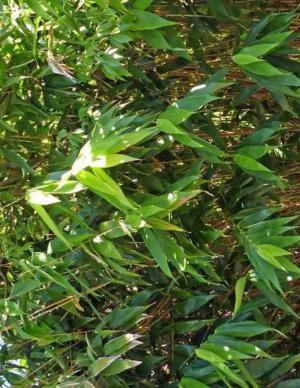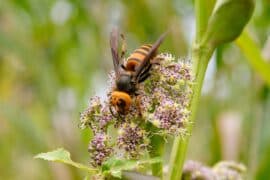Tiger Grass
(Thysanolaena)

Description
Thysanolaena is a genus of plants in the grass family, the only genus in the tribe Thysanolaeneae. Its only recognized species is Thysanolaena latifolia (formerly Thysanolaena maxima), native to China (Guangdong, Guangxi, Guizhou, Hainan, Taiwan, Yunnan) Bangladesh, Bhutan, Cambodia, India, Indonesia, Laos, Malaysia, Myanmar, Nepal, New Guinea, Philippines, Sri Lanka, Thailand, and Vietnam. It is also naturalized in Mauritius, Seychelles, Gambia, Tanzania, Hawaii, California, the West Indies and Brazil. Tiger grass and Nepalese Broom Grass are common names for this plant, and in Nepal, amliso (Nepali: अम्लिसो). The flowers of this plant are used as cleaning tool or broom, which is known as कुच्चो kuchcho in Nepali, झाड़ू jhadu (phool jhadu) in Hindi. It is found growing along steep hills, sandy banks of rivers and damp steep banks along ravines. It is widely distributed throughout Nepal but only up to an altitude of 2000 metres. The grass can be grown on severely degraded and marginal lands. Broom grass tends to grow in tussocks, with 4-5 tussocks in a 100-metre radius and is harvested during the winter seasons between January and March. Tiger Grass is another common name for this plant throughout the tropics where it is grown as an ornamental. It may be used to create the effect of bamboo, which it resembles, but to which it is not related. In order to grow broom grass the slips in the planting site must be clear of weeds and debris. Planting the broom grass slips in fertile soil ensures the best yield. It is usually planted at the beginning of monsoon season during the months of May to June as the soil has the best moisture for plant genesis. One month before planting pits of 30m cubed are dug up and left for weathering. On hilly land the pits should be placed about 1.5 x 2m apart along the contour lines or trace bunds, while on fertile land the best spacing is 2.5m x 2.5m. Farm yard manure and 10% BHC fertilizer at 10 grams per pit are mixed into the pits before planting the seeds. The plant becomes rather low maintenance after planting. The plant requires to be weeded 3-4 times in the first year and annually in the following years. Manure can be applied to the soil during the second weeding to provide the best yields in the first year. The pits need to be fenced off to protect the plants from grazing.
Taxonomic tree:







